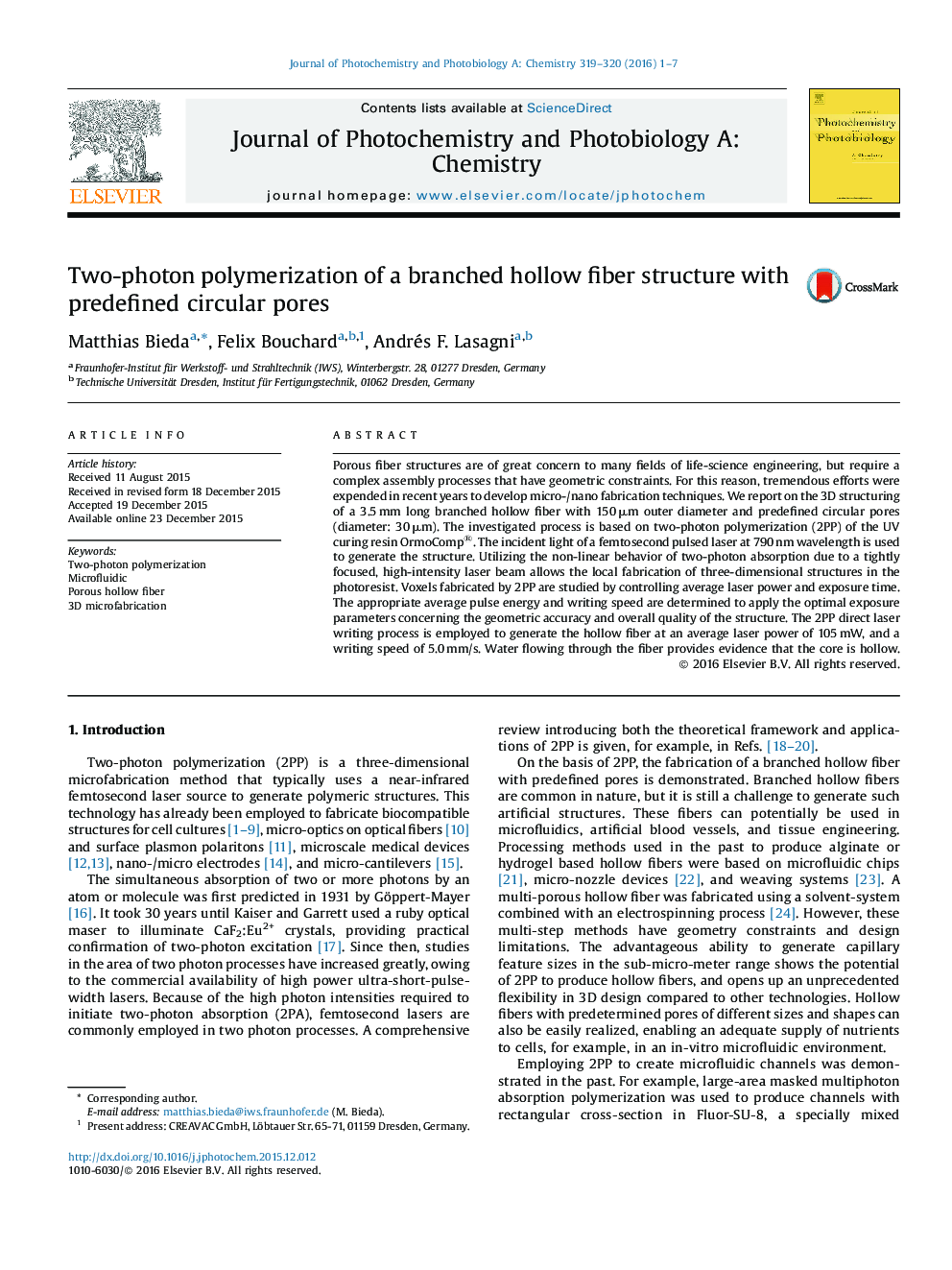| کد مقاله | کد نشریه | سال انتشار | مقاله انگلیسی | نسخه تمام متن |
|---|---|---|---|---|
| 25827 | 43886 | 2016 | 7 صفحه PDF | دانلود رایگان |
• Two-photon polymerization (2PP) was employed to fabricate a 3.5 mm long branched hollow fiber with predefined circular pores (diameter 30 μm).
• Proper selection of average laser power and writing speed is required for a mechanically stable fiber structure with 150 μm outer diameter and 90 μm inner diameter.
• The smallest lateral width of an isolated voxel generated by means of 2PP was 0.6 μm with a length of 2.6 μm.
• 2PP allows 3D micro- and nanostructuring of UV curing resins without geometric constraints.
Porous fiber structures are of great concern to many fields of life-science engineering, but require a complex assembly processes that have geometric constraints. For this reason, tremendous efforts were expended in recent years to develop micro-/nano fabrication techniques. We report on the 3D structuring of a 3.5 mm long branched hollow fiber with 150 μm outer diameter and predefined circular pores (diameter: 30 μm). The investigated process is based on two-photon polymerization (2PP) of the UV curing resin OrmoComp®. The incident light of a femtosecond pulsed laser at 790 nm wavelength is used to generate the structure. Utilizing the non-linear behavior of two-photon absorption due to a tightly focused, high-intensity laser beam allows the local fabrication of three-dimensional structures in the photoresist. Voxels fabricated by 2PP are studied by controlling average laser power and exposure time. The appropriate average pulse energy and writing speed are determined to apply the optimal exposure parameters concerning the geometric accuracy and overall quality of the structure. The 2PP direct laser writing process is employed to generate the hollow fiber at an average laser power of 105 mW, and a writing speed of 5.0 mm/s. Water flowing through the fiber provides evidence that the core is hollow.
Journal: Journal of Photochemistry and Photobiology A: Chemistry - Volumes 319–320, 15 March–15 April 2016, Pages 1–7
